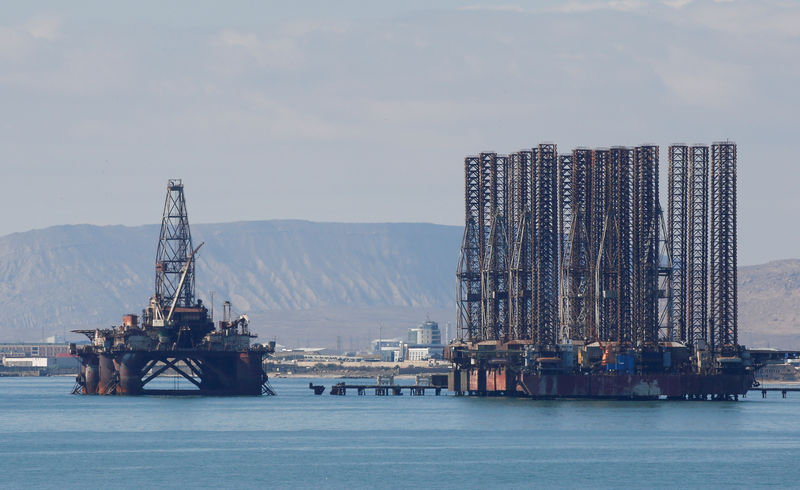By Aaron Sheldrick and Dmitry Zhdannikov
TOKYO/LONDON (Reuters) - Brent oil prices resumed their climb toward $70 per barrel on Thursday as expectations of tight global supply outweighed pressure from rising U.S. inventories and production.
International benchmark Brent futures rose 27 cents to $69.58 by 1143 GMT. Brent touched $69.96 on Wednesday - the highest since Nov. 12, when it last traded above $70.
U.S. West Texas Intermediate (WTI) crude rose 22 cents to $62.68 a barrel. The contract hit $62.99 on Wednesday, also the highest since November.
Brent has gained nearly 30 percent this year, while WTI has risen nearly 40 percent. Prices have been underpinned by U.S. sanctions on Iranian and Venezuelan crude, OPEC production cuts and rising global demand.
"There is a clear bias to the upside with the supply restrictions," said Michael McCarthy, chief market strategist at CMC Markets in Sydney.
"And there's a much-better-than-expected demand picture after the recent China and U.S. PMI numbers, along with a potential kicker from any U.S.-China trade agreement," he said.
The Caixin/Markit services purchasing managers' index (PMI) rose to 54.4, the highest since January 2018 and up from February's 51.1, a fourth-month low, a private business survey of China's service sector showed on Wednesday.
Trade talks between the United States and China made "good headway" last week in Beijing and the two sides aim to bridge differences during further talks, White House economic adviser Larry Kudlow said on Wednesday.
The refinery maintenance season is also drawing to a close and that will provide further demand for crude, said Virendra Chauhan, oil analyst at Energy Aspects in Singapore.
"The physical market is very strong and we are now starting to trade post-turnaround barrels, which should mean physical markets strengthen and flat prices should follow," he said.
Crude oil inventories in the United States rose by 7.2 million barrels last week. Analysts had forecast a decrease. U.S. crude production climbed by 100,000 barrels per day to a record 12.2 million bpd, government data showed.

For a graphic on U.S. oil production, storage & drilling levels, see - https://tmsnrt.rs/2HWNIqK